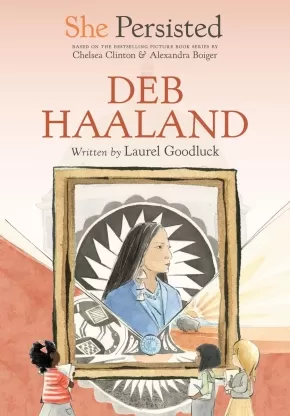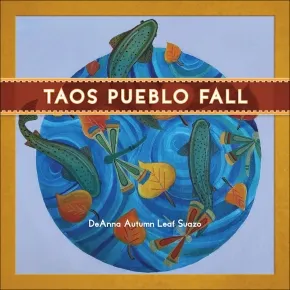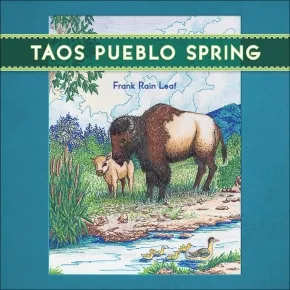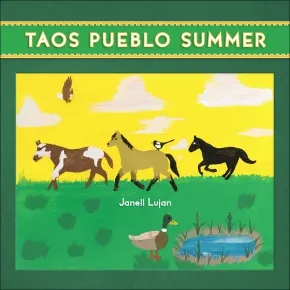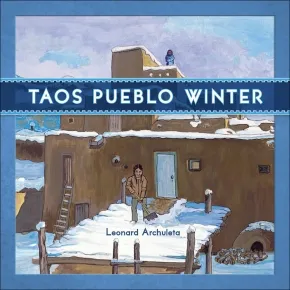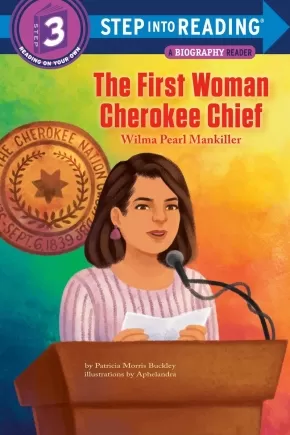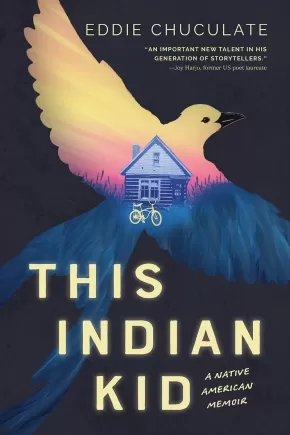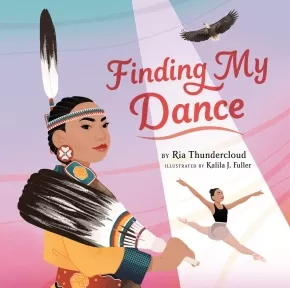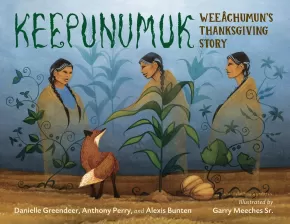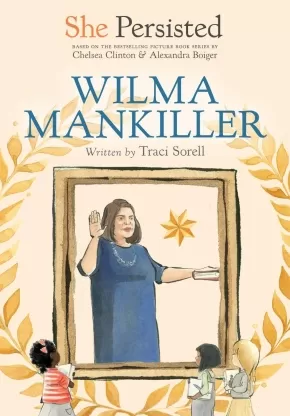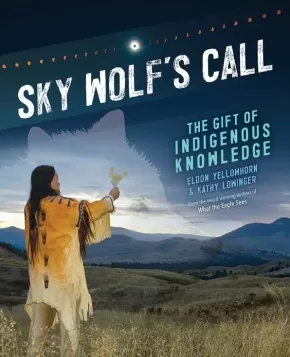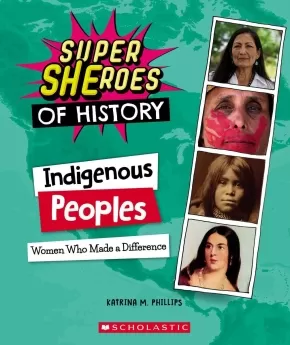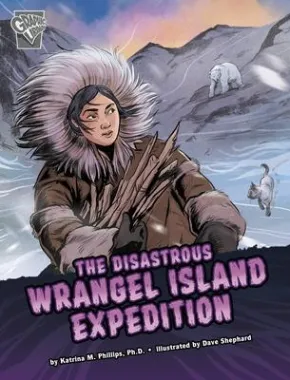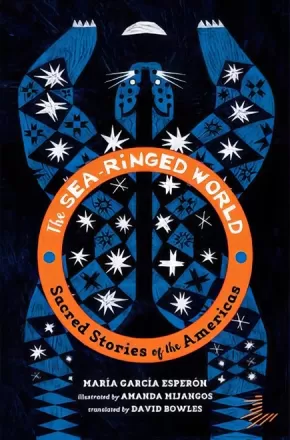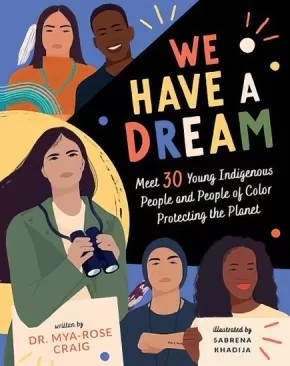
Indigenous Peoples in the United States
46
-
60
of
97 Results;
Sort By
Go To
of 7
She Persisted: Deb Haaland
$9.50
Format:
Paperback
Text Content Territories:
Indigenous American; Native American; Laguna Pueblo;
ISBN / Barcode: 9780593620700
Synopsis:
Synopsis:
As a child of two military parents, Deb Haaland moved around a lot when she was young before finally settling in Albuquerque to be near family. But she persisted, studying hard and eventually earning a law degree. An enrolled member of the Pueblo Laguna nation, Deb was one of the first two Native American women to be elected to Congress, where she represented New Mexico's 1st District. In 2021, when the Senate confirmed her as President Biden's secretary of the interior, she became the first Native American in history to become a cabinet secretary. She continues to break barriers and inspire future generations to dream of greater opportunities.
In this chapter book biography by acclaimed author Laurel Goodluck, readers learn about the amazing life of Deb Haaland--and how she persisted.
Complete with an introduction from Chelsea Clinton, black-and-white illustrations throughout, and a list of ways that readers can follow in Deb Haaland's footsteps and make a difference! A perfect choice for kids who love learning and teachers who want to bring inspiring women into their curriculum.
Educator & Series Information
Recommended for ages 6 to 9.
This book is part of the She Persisted series, a chapter book series about women who spoke up and rose up against the odds.
Additional Information
96 pages | 5.31" x 7.63" | B&W Interior Illustrations | Paperback
Taos Pueblo Fall (BB)
$14.95
Artists:
Format:
Board Book
Text Content Territories:
Indigenous American; Native American; Taos Pueblo;
Grade Levels: Preschool;
ISBN / Barcode: 9781570673917
Synopsis:
Synopsis:
This delightful board book, written without text, was created by the Taos Pueblo's Tiwa Language Program to preserve the Tiwa culture and revitalize the Tiwa language by teaching it to younger generations. Many other Indigenous languages also need revitalizing, so it is the hope of the Taos Pueblo's Tiwa Language Program that other American Indian Nations will find the books in the Toas Pueblo Four Seasons series useful to teach their language to young children. The beautiful, hand-drawn illustrations will also teach young children about the four seasons of the year. All proceeds of the book support the Taos Pueblo's Tiwa Language Program.
This text-free board book allows Indigenous nations to teach their own languages to children.
Educator & Series Information
This wordless book is part of the Taos Pueblo Four Seasons series.
We are the "Red Willow People" of Taos Pueblo and have sustained our ancient village as one of the longest continuously inhabited communities, for over 1,000 years. Taos Pueblo is located in northern New Mexico and our Tiwa language is a dialect of the Tanoan language, which is not a written language. Traditionally we learn our Tiwa Language through oral tradition but we are in danger of losing our ancient language due to colonization, modernization, and the shift from Tiwa as our first language to English as our first language. The efforts of the Taos Pueblo Tiwa Language Program are focused on revitalizing the Tiwa Language and culture by protecting and preserving it, through teaching it to our younger generations.
This text-free board book allows Indigenous nations to teach their own languages to children.
Additional Information
22 pages | 8" x 8" | Board Book
Taos Pueblo Spring (BB)
$14.95
Artists:
Format:
Board Book
Text Content Territories:
Indigenous American; Native American; Taos Pueblo;
Grade Levels: Preschool;
ISBN / Barcode: 9781570674143
Synopsis:
Synopsis:
This delightful board book, written without text, was created by the Taos Pueblo's Tiwa Language Program to preserve the Tiwa culture and revitalize the Tiwa language by teaching it to younger generations. Many other Indigenous languages also need revitalizing, so it is the hope of the Taos Pueblo's Tiwa Language Program that other American Indian Nations will find the books in the Toas Pueblo Four Seasons series useful to teach their language to young children. The beautiful, hand-drawn illustrations will also teach young children about the four seasons of the year. All proceeds of the book support the Taos Pueblo's Tiwa Language Program.
This text-free board book allows Indigenous nations to teach their own languages to children.
Educator & Series Information
This wordless book is part of the Taos Pueblo Four Seasons series.
We are the "Red Willow People" of Taos Pueblo and have sustained our ancient village as one of the longest continuously inhabited communities, for over 1,000 years. Taos Pueblo is located in northern New Mexico and our Tiwa language is a dialect of the Tanoan language, which is not a written language. Traditionally we learn our Tiwa Language through oral tradition but we are in danger of losing our ancient language due to colonization, modernization, and the shift from Tiwa as our first language to English as our first language. The efforts of the Taos Pueblo Tiwa Language Program are focused on revitalizing the Tiwa Language and culture by protecting and preserving it, through teaching it to our younger generations.
This text-free board book allows Indigenous nations to teach their own languages to children.
Additional Information
22 pages | 8" x 8" | Board Book
Taos Pueblo Summer (BB)
$14.95
Artists:
Format:
Board Book
Text Content Territories:
Indigenous American; Native American; Taos Pueblo;
Grade Levels: Preschool;
ISBN / Barcode: 9781570673696
Synopsis:
Synopsis:
This delightful board book, written without text, was created by the Taos Pueblo's Tiwa Language Program to preserve the Tiwa culture and revitalize the Tiwa language by teaching it to younger generations. Many other Indigenous languages also need revitalizing, so it is the hope of the Taos Pueblo's Tiwa Language Program that other American Indian Nations will find the books in the Toas Pueblo Four Seasons series useful to teach their language to young children. The beautiful, hand-drawn illustrations will also teach young children about the four seasons of the year. All proceeds of the book support the Taos Pueblo's Tiwa Language Program.
This text-free board book allows Indigenous nations to teach their own languages to children.
Educator & Series Information
This wordless book is part of the Taos Pueblo Four Seasons series.
We are the "Red Willow People" of Taos Pueblo and have sustained our ancient village as one of the longest continuously inhabited communities, for over 1,000 years. Taos Pueblo is located in northern New Mexico and our Tiwa language is a dialect of the Tanoan language, which is not a written language. Traditionally we learn our Tiwa Language through oral tradition but we are in danger of losing our ancient language due to colonization, modernization, and the shift from Tiwa as our first language to English as our first language. The efforts of the Taos Pueblo Tiwa Language Program are focused on revitalizing the Tiwa Language and culture by protecting and preserving it, through teaching it to our younger generations.
This text-free board book allows Indigenous nations to teach their own languages to children.
Additional Information
22 pages | 8" x 8" | Board Book
Taos Pueblo Winter (BB)
$14.95
Artists:
Format:
Board Book
Text Content Territories:
Indigenous American; Native American; Taos Pueblo;
Grade Levels: Preschool;
ISBN / Barcode: 9781570673450
Synopsis:
Synopsis:
This delightful board book, written without text, was created by the Taos Pueblo's Tiwa Language Program to preserve the Tiwa culture and revitalize the Tiwa language by teaching it to younger generations. Many other Indigenous languages also need revitalizing, so it is the hope of the Taos Pueblo's Tiwa Language Program that other American Indian Nations will find the books in the Toas Pueblo Four Seasons series useful to teach their language to young children. The beautiful, hand-drawn illustrations will also teach young children about the four seasons of the year. All proceeds of the book support the Taos Pueblo's Tiwa Language Program.
This text-free board book allows Indigenous nations to teach their own languages to children.
Educator & Series Information
This wordless book is part of the Taos Pueblo Four Seasons series.
We are the "Red Willow People" of Taos Pueblo and have sustained our ancient village as one of the longest continuously inhabited communities, for over 1,000 years. Taos Pueblo is located in northern New Mexico and our Tiwa language is a dialect of the Tanoan language, which is not a written language. Traditionally we learn our Tiwa Language through oral tradition but we are in danger of losing our ancient language due to colonization, modernization, and the shift from Tiwa as our first language to English as our first language. The efforts of the Taos Pueblo Tiwa Language Program are focused on revitalizing the Tiwa Language and culture by protecting and preserving it, through teaching it to our younger generations.
This text-free board book allows Indigenous nations to teach their own languages to children.
Additional Information
22 pages | 7.90" x 7.90" | Board Book
The First Woman Cherokee Chief: Wilma Pearl Mankiller
$7.99
Format:
Paperback
Text Content Territories:
Indigenous American; Native American; Cherokee; Cherokee Nation (Cherokee Nation of Oklahoma);
ISBN / Barcode: 9780593568507
Synopsis:
Synopsis:
Find out all about Wilma Pearl Mankiller, the first woman Cherokee chief whose image will appear on a 2022 US quarter, in this Step 3 Biography Reader.
In 1985, Wilma Pearl Mankiller became the first woman Principal Chief of the Cherokee Nation. She had to convince her people that the chief should be the best person for the job, man or woman.
Before the English came to what is now the United States, Cherokee women and men shared the leadership of the tribe. This created balance. But the English colonists told the Native People that men should be in charge.
It stayed that way for many years, until Wilma Pearl Mankiller made history. She used the concept of gaduji, of everyone helping each other, to make the Cherokee Nation strong.
Step 3 Readers feature engaging characters in easy-to-follow plots and popular topics—for children who are ready to read on their own.
Reviews
“This work is historically accurate on an underrepresented topic in the curriculum.” —School Library Journal
Educator & Series Information
Recommended for ages 5 to 8.
This book is part of the Step Into Reading series. This series is designed to give every child a successful reading experience. The grade levels are only guides; children will progress through the steps at their own speed, developing confidence in their reading. The F&P Text Level on the back cover serves as another tool to help you choose the right book.
Step 3 Readers feature engaging characters in easy-to-follow plots and popular topics—for children who are ready to read on their own.
Additional Information
48 pages | 6.06" x 9.00" | Paperback
This Indian Kid: A Native American Memoir
$26.99
Format:
Hardcover
Text Content Territories:
Indigenous American; Native American; Muscogee (Creek);
ISBN / Barcode: 9781338802085
Synopsis:
Synopsis:
Award-winning author Eddie Chuculate recounts his experience growing up in rural Oklahoma, from boyhood to young manhood, in an evocative and vivid voice.
These books help readers learn about the world in which they live and develop their critical thinking skills so that they may become dynamic citizens who are able to analyze and understand our past, participate in essential discussions about our present, and work to grow and build our future.
"Granny was full-blooded Creek, but the Bureau of Indian Affairs insisted she was fifteen-sixteenths. She showed her card to me. I’d sit at the kitchen table and stare at her when she was eating, wondering how you can be a sixteenth of anything."
Growing up impoverished and shuttled between different households, it seemed life was bound to take a certain path for Eddie Chuculate. Despite the challenges he faced, his upbringing was rich with love and bountiful lessons from his Creek and Cherokee heritage, deep-rooted traditions he embraced even as he learned to live within the culture of white, small-town America that dominated his migratory childhood.
Award-winning author Eddie Chuculate brings his childhood to life with spare, unflinching prose. This book is at once a love letter to his Native American roots and an inspiring and essential message for young readers everywhere, who are coming of age in an era when conversations about acceptance and empathy, love and perspective are more necessary than ever before.
Educator Information
For ages 12+
This book is part of Scholastic Focus, the premier home of thoroughly researched, beautifully written, and thoughtfully designed works of narrative nonfiction aimed at middle-grade and young adult readers.
Additional Information
240 pages | 5.50" x 8.25" | Hardcover
Finding My Dance
$24.99
Artists:
Format:
Hardcover
Text Content Territories:
Indigenous American; Native American; Ho-Chunk (Winnebago); Sandia Pueblo;
ISBN / Barcode: 9780593093894
Synopsis:
Synopsis:
In her debut picture book, professional Indigenous dancer Ria Thundercloud tells the true story of her path to dance and how it helped her take pride in her Native American heritage.
At four years old, Ria Thundercloud was brought into the powwow circle, ready to dance in the special jingle dress her mother made for her. As she grew up, she danced with her brothers all over Indian country. Then Ria learned more styles--tap, jazz, ballet--but still loved the expressiveness of Indigenous dance. And despite feeling different as one of the only Native American kids in her school, she always knew she could turn to dance to cheer herself up.
Follow along as Ria shares her dance journey--from dreaming of her future to performing as a professional--accompanied by striking illustrations that depict it while bringing her graceful movements to life.
Reviews
"A warmly illustrated memoir of dance and culture, this will have broad appeal about using art for expression and to overcome difficulties." —School Library Journal, starred review
"A moving picture book about the resilience one can find in one’s cultural inheritance." —Kirkus Reviews
Educator Information
Recommended for ages 4 to 8.
Additional Information
40 pages | 10.44" x 10.31" | Hardcover
Keepunumuk: Weeachumun's Thanksgiving Story
$22.99
Artists:
Format:
Hardcover
Text Content Territories:
Indigenous American; Native American; Wampanoag (Wôpanâak); Mashpee Wampanoag Tribe;
ISBN / Barcode: 9781623542900
Synopsis:
Synopsis:
In this Wampanoag story told in a Native tradition, two kids from the Mashpee Wampanoag tribe learn the story of Weeâchumun (corn) and the first Thanksgiving.
The Thanksgiving story that most Americans know celebrates the Pilgrims. But without members of the Wampanoag tribe who already lived on the land where the Pilgrims settled, the Pilgrims would never have made it through their first winter. And without Weeâchumun (corn), the Native people wouldn't have helped.
An important picture book honoring both the history and tradition that surrounds the story of the first Thanksgiving.
Reviews
"A Wamponoag grandmother plants her garden with weeâchumun (corn), beans, and squash, or the Three Sisters. When her grandchildren ask to hear the story of Thanksgiving, N8hkumuhs tells them that their people call it Keepunumuk, “the time of harvest,” and explains what really happened. The tale opens with Seagull warning Weeâchumun—depicted as a woman with a translucent body—of the Pilgrims’ arrival; Weeâchumun worries because many of the First Peoples who cared for her have gone to the Spirit World, and she fears this will be her last winter. Fox keeps an eye out and in spring tells Weeâchumun and her sisters that the newcomers endured a hard winter; many died. Weeâchumun and her sisters want to help: “We will send the First Peoples to help the newcomers.” The Wampanoag people teach the survivors how to plant corn, beans, and squash. The settlers hold a feast to celebrate the harvest; though it’s remembered by many as the first Thanksgiving, backmatter explains that because of the disease and warfare brought by the settlers, for the Wampanoag people, it is remembered as a day of mourning. Rich, saturated acrylics imbued with a touch of magic add to the vibrancy of this important, beautiful story. A much-needed Thanksgiving retelling that centers the Wamponoag people. (glossary, information on the Wampanoag map, recipes) (Picture book. 3-7)" —Kirkus, starred review
"This picture book features a contemporary Wampanoag grandmother and her grandchildren. N8hkumuhs shares the story of the Three Sisters—Corn, Beans, and Squash—and the first Thanksgiving, known as “Keepunumuk” by the Wampanoag people. The book transitions into a combination of history and storytelling about contact between the “First Peoples” and the newcomers. This format will be novel to some young children given the setting and timeframe of the story, though the book attempts to differentiate the parts that are the story by changing the typeface and including ethereal-like images of the Three Sisters. “Before You Begin” and “Important Words to Know” sections also provide context. Rich back matter includes more information about the Wampanoag tribes, a traditional recipe, and a photo and information about the real Maple and Quill, the grandchildren in the story. Overall, this story is a good addition for the historical knowledge of the first Thanksgiving from the Wampanoag viewpoint. VERDICT: A good choice for libraries striving to share Indigenous perspectives."— School Library Journal
Additional Information
32 pages | 11.38" x 8.81" | Hardcover
She Persisted: Wilma Mankiller
$7.99
Format:
Paperback
Text Content Territories:
Indigenous American; Native American; Cherokee; Cherokee Nation (Cherokee Nation of Oklahoma);
ISBN / Barcode: 9780593403051
Synopsis:
Synopsis:
The descendant of Cherokee ancestors who had been forced to walk the Trail of Tears, Wilma Mankiller experienced her own forced removal from the land she grew up on as a child. As she got older and learned more about the injustices her people had faced, she dedicated her life to instilling pride in Native heritage and reclaiming Native rights. She went on to become the first woman Principal Chief of the Cherokee Nation.
In this chapter book biography by award-winning author Traci Sorell, readers learn about the amazing life of Wilma Mankiller--and how she persisted.
Complete with an introduction from Chelsea Clinton, black-and-white illustrations throughout, and a list of ways that readers can follow in Wilma Mankiller's footsteps and make a difference!
Educator Information
Recommended for ages 6 to 9.
This book is part of the She Persisted series, a chapter book series about women who spoke up and rose up against the odds.
Additional Information
80 pages | 5.31" x 7.63" | Paperback
Sky Wolf's Call: The Gift of Indigenous Knowledge
$16.95
Format:
Paperback
Text Content Territories:
Indigenous Canadian; Indigenous American;
ISBN / Barcode: 9781773216294
Synopsis:
Synopsis:
From healing to astronomy to our connection to the natural world, the lessons from Indigenous knowledge inform our learning and practices today.
How do knowledge systems get passed down over generations? Through the knowledge inherited from their Elders and ancestors, Indigenous Peoples throughout North America have observed, practiced, experimented, and interacted with plants, animals, the sky, and the waters over millennia. Knowledge keepers have shared their wisdom with younger people through oral history, stories, ceremonies, and records that took many forms.
In Sky Wolf’s Call, award-winning author team of Eldon Yellowhorn and Kathy Lowinger reveal how Indigenous knowledge comes from centuries of practices, experiences, and ideas gathered by people who have a long history with the natural world. Indigenous knowledge is explored through the use of fire and water, the acquisition of food, the study of astronomy, and healing practices.
Reviews
"An authoritative tribute to Indigenous knowledge systems that's a must-have for every library and classroom." - Kirkus Reviews
“Sky Wolf’s Call has an astoundingly broad scope introducing Indigenous Traditional Ecological Knowledge (TEK) in North America from time immemorial to the current day … This fast paced celebration of Indigenous innovation and technology is riveting.” - The British Columbia Review
Educator Information
Interest Age: 11+
Grade: 6+
Reading Age: 11+
A Junior Library Guild Gold Standard Selection
Table of Contents
Author’s Note
1: Sky Wolf’s Call: The Gift of Indigenous Knowledge: Foundational ideas behind Indigenous Knowledge and the importance of retaining, maintaining, and learning this sacred knowledge.
2: Water Knowledge Ways: Water links us all and is sacred. Indigenous people have fought to protect the gift of water from harm, and the critical role it has played in transportation, agriculture, irrigation, and food.
3: Fire and Smoke Knowledge: Fire and smoke are great gifts, including the burning of tobacco. In sacred ceremonies, smoke connects our breath with the heavens. Fire cooks our food, helps grow our crops, and even keeps our waters clean. Cultural burns are used to benefit the land.
4: Indigenous Knowledge and Food Security: Sharing, growing, and receiving food with family, community, and visitors is both an honour and a tradition. By understanding the traditional practices of salmon fishing, clam gardens, planting and harvesting certain crops, or hunting buffalo, Indigenous Peoples have respected what Mother Earth has to offer.
5: Healing Knowledge Ways: The use of the medicine wheel and the sweat lodge have been used over centuries and still help sick and troubled people. Games such as lacrosse and chunkey have helped in building individual strength and community spirit. And braiding together Indigenous healing and western science has opened new learning opportunities.
6: Sky Knowledge: From the earliest Indigenous astronomers to modern astrophysicists, these sky watchers have studied the sacred gifts of the sky: the sun, moon, planets, and stars that have produced maps, calendars, beliefs about how to govern, and even directions for building homes.
7: Keeping the Knowledge: Indigenous People hold oral narratives in high esteem because that was the way knowledge passed from one generation to the next. People in North America recorded important events with symbols, pictographs (paintings), and petroglyphs (carvings). Language Keepers and Knowledge keepers are making sure that Indigenous knowledge is never forgotten.
8: Sky Wolf’s Call: Indigenous knowledge is based on the idea that this world is a gift. Understanding the idea of connections (the skies with the earth, people with animals, the practical with the spiritual) is an important lesson with the challenges of climate change, pandemics, and wars. The wisdom of Indigenous Knowledge can help the whole world.
Thanks and Acknowledgments
Glossary
Selected Reading
Sources and Contacts
Additional Information
120 pages | 7.50" x 9.25" | Paperback
Super SHEroes of History: Women Who Made a Difference (Indigenous Peoples)
$9.99
Format:
Paperback
Text Content Territories:
Indigenous American; Indigenous Canadian;
ISBN / Barcode: 9781338840742
Synopsis:
Synopsis:
Meet the Super SHEroes of History, the women who have shaped history and society since ancient times.
Indigenous women were prominent members of their communities long before Europeans reached North America. When the newcomers arrived, they played a key role in holding their communities together in the face of social turmoil. Some joined male warriors to fight European settlement, while others such as Nanyehi/Nancy Ward argued that the two peoples could coexist peacefully. Indigenous women led political and legal fights to preserve their traditional rights throughout the 20th century and still do so today. Some became active campaigners in numerous causes, especially in the struggle to protect sacred lands from construction. This book tells their stories and describes their vital contributions.
Educator Information
Recommended for ages 8 to 12.
Additional Information
48 pages | 7.12" x 8.37" | Paperback
The Disastrous Wrangel Island Expedition
$11.99
Artists:
Format:
Paperback
Text Content Territories:
Indigenous American; Alaska Native; Inupiat (Alaskan Inuit);
ISBN / Barcode: 9781666322361
Synopsis:
Synopsis:
In 1921, Inupait seamstress Ada Blackjack joined a a group of four white men who wanted to establish a trading post on Wrangel Island in the freezing Arctic Ocean. The explorers were stranded on the island when their return ship was forced to turn back due to ice. Facing harsh conditions and dwindling food supplies, the men died one by one, but Ada remained. Find out how she alone managed to survive the disastrous expedition.
Reviews
"The lesser-known 1921 Wrangel Island Expedition is chronicled in this graphic novel.... The book begins by introducing its two key players: Ada Blackjack (a young Inuit single mother from Nome, Alaska) and Vilhjalmur Steffansson (an aging white explorer of Icelandic heritage). Steffansson was determined to establish a European colony on Wrangel Island, off the coast of Siberia. He assembled a five-man team of explorers, and Blackjack, desperate for money, joined them. While the writing is a bit stilted, the artwork makes the tale quite lively, especially once the expedition reaches the uninhabited island. Readers will become engrossed in the team’s efforts to survive and be impressed with how Blackjack proves herself the most capable person there; indeed, she’s the sole survivor. A map and additional information conclude."— Julia Smith, Booklist
Educator Information
Recommended for ages 8 to 11.
Additional Information
32 pages | 7.00" x 9.00" | Paperback
The Sea-Ringed World: Sacred Stories of the America
$25.99
Artists:
Format:
Paperback
Text Content Territories:
Indigenous American; Alaska Native; Alutiiq (Sugpiaq); Native American; Anishinaabeg; Ojibwe (Chippewa); Hopi; Sioux; Indigenous Canadian; Inuit; Indigenous Caribbean; Taino; Indigenous Central American; Indigenous Peoples in Costa Rica; Bribri; Indigenous Peoples in Mexico; Huichol; Nahuas; Maya; Nahuas; Indigenous South American;
ISBN / Barcode: 9781646141517
Synopsis:
Synopsis:
A collection of stories from nations and cultures across our two continents—the Sea-Ringed World, as the Aztecs called it—from the Andes all the way up to Alaska.
Fifteen thousand years before Europeans stepped foot in the Americas, people had already spread from tip to tip and coast to coast. Like all humans, these Native Americans sought to understand their place in the universe, the nature of their relationship with the divine, and the origin of the world into which their ancestors had emerged. The answers lay in their sacred stories.
Educator Information
Recommended for ages 8+
Additional Information
256 pages | 6.31" x 9.11" | Paperback
We Have a Dream: Meet 30 Young Indigenous People and People of Color Protecting the Planet
$22.99
Artists:
Format:
Hardcover
Text Content Territories:
Indigenous;
ISBN / Barcode: 9781419756665
Synopsis:
Synopsis:
Thirty young environmental activists share their dreams with voice of a generation Mya-Rose Craig.
Indigenous people and people of color are disproportionately affected by climate change. And yet they are underrepresented within the environmental movement. But not anymore.
Written by the extraordinary environmental and campaigner for equal rights Mya-Rose Craig—aka Birdgirl—this book profiles 30 young environmental activists who are Indigenous people or people of color, from communities on the frontline of global climate change. Each speaks to the diverse set of issues they are fighting for, from water conservation, to deforestation, to indigenous rights, and shares their dream . . .
A dream for climate justice.
A dream for a healthy planet.
A dream for a fairer world, for all.
From wildlife conservation to clean water, air pollution to plastic waste, climate justice to climate strikes, the time has come to listen to a generation of young people of colour demanding urgent change for the world they will inherit.
This is the first book from Craig, who shared a stage with Greta Thunberg in 2019’s climate strikes. Some of the activists profiled include Marshallese ocean activist Litokne Kabua; @ThisIsZeroHour founder Zanagee Artis; indigenous rights activists Thomas Tonatiuh Lopez Jr., and Caitlyn Baikie; climate justice activist Rebeca Sabnam, and clean water activist Autumn Peltier.
Educator Information
Recommended for ages 8 to 12.
Additional Information
64 pages | 7.00" x 9.00" | Hardcover
Sort By
Go To
of 7

